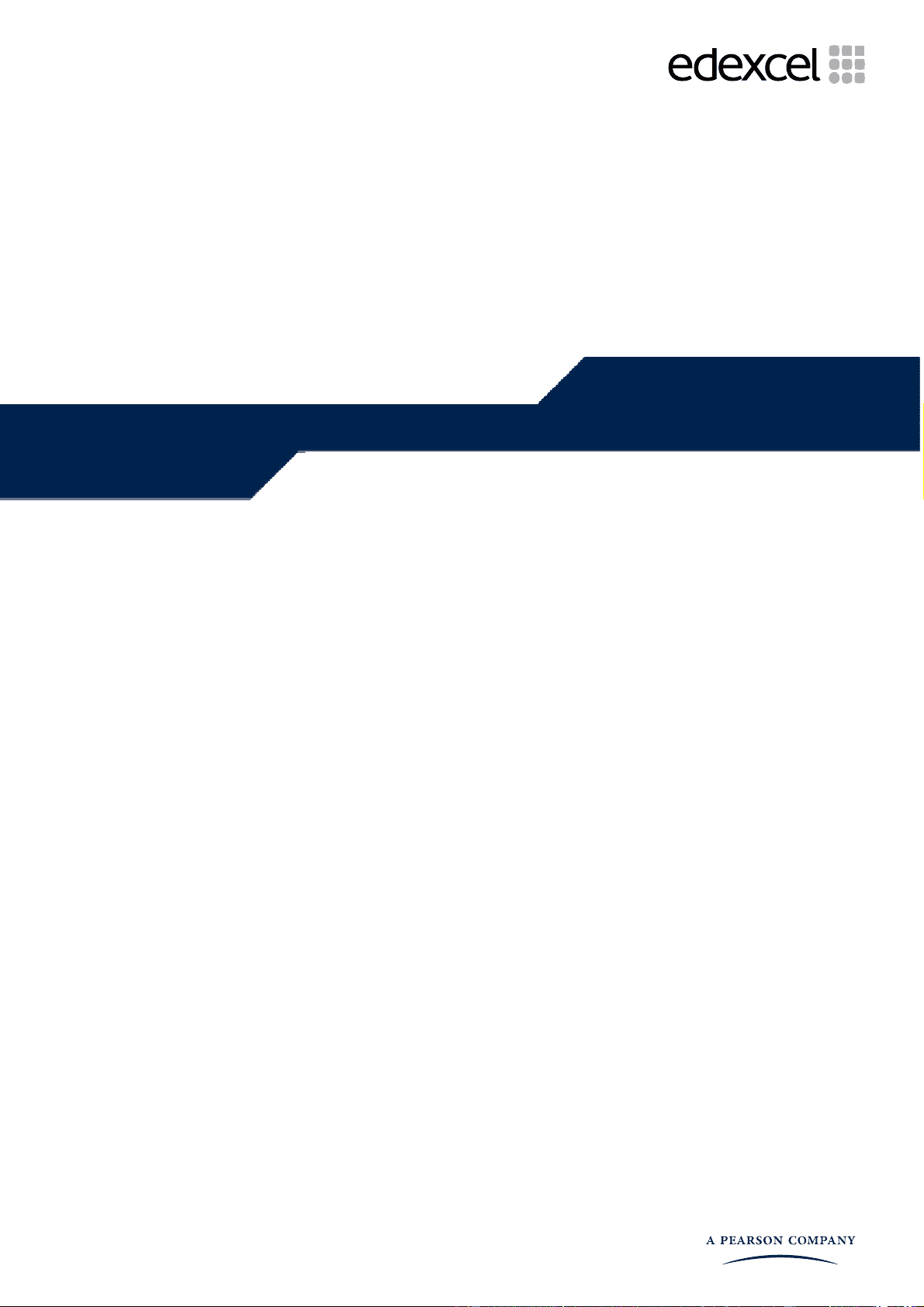
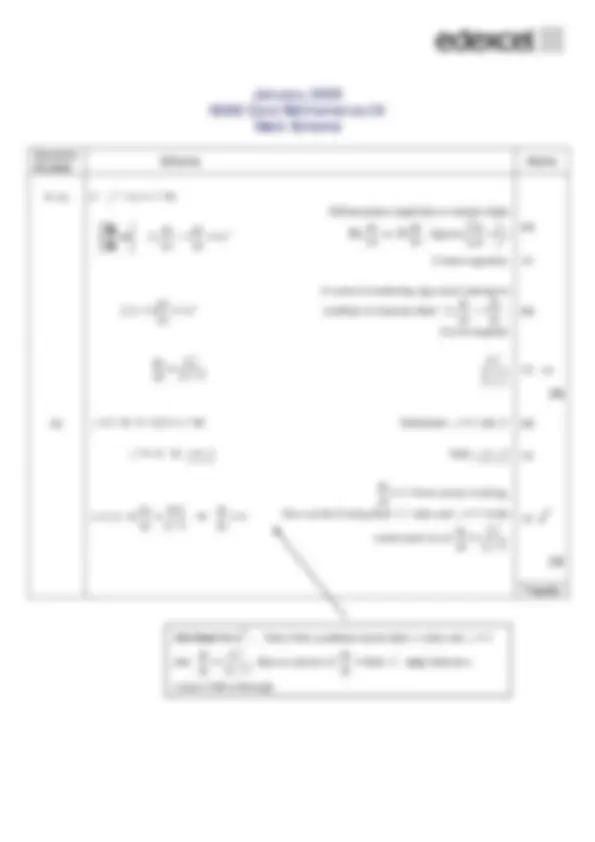
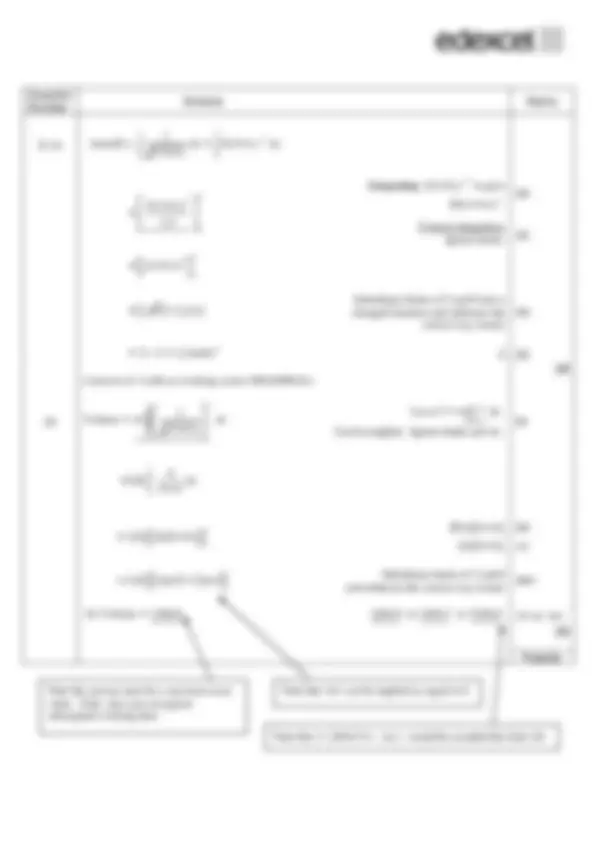
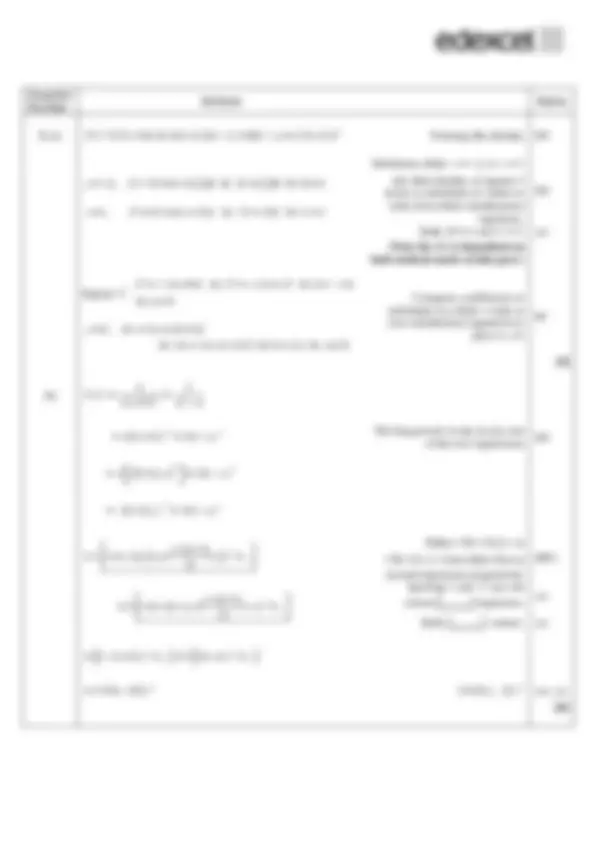
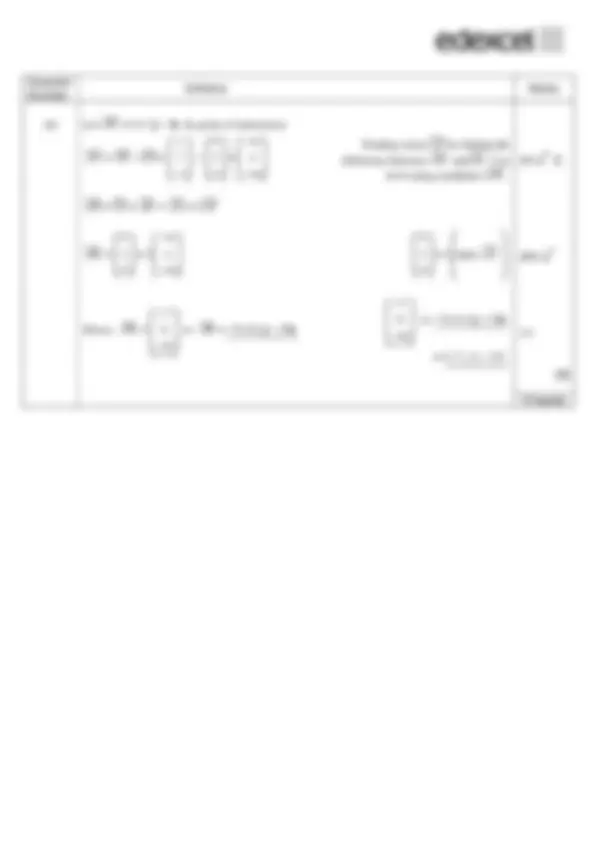
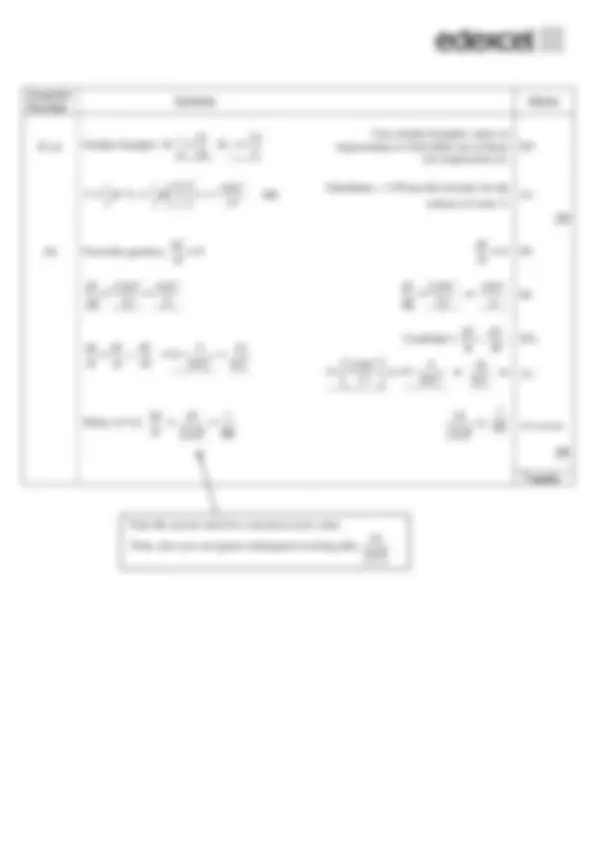
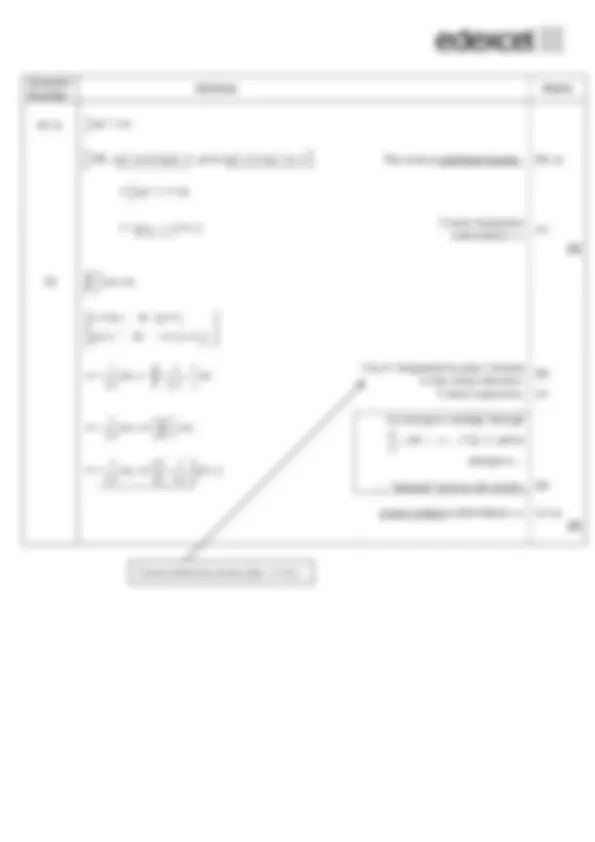

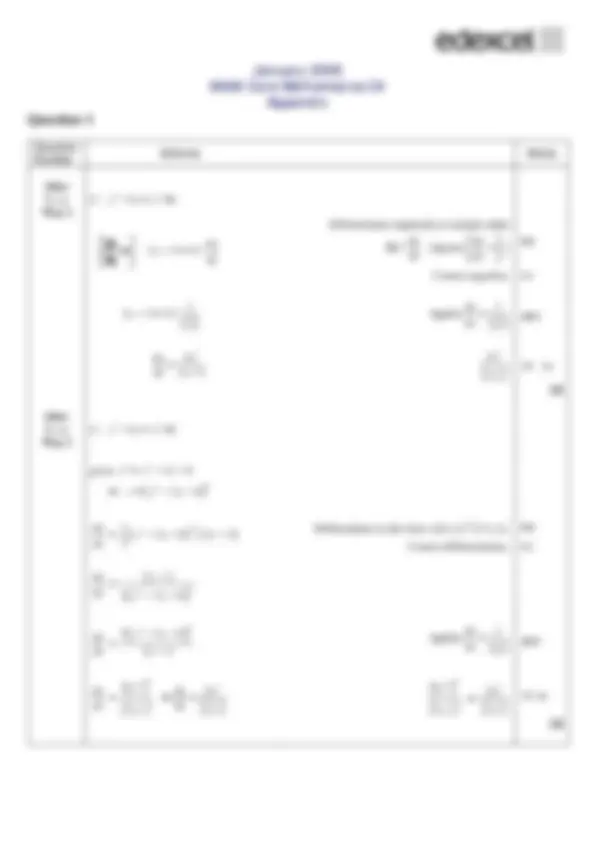
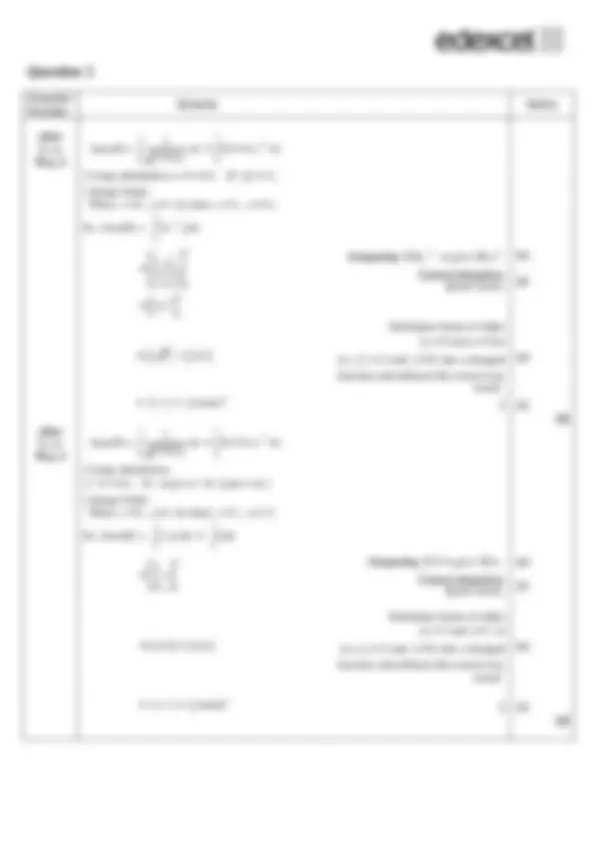
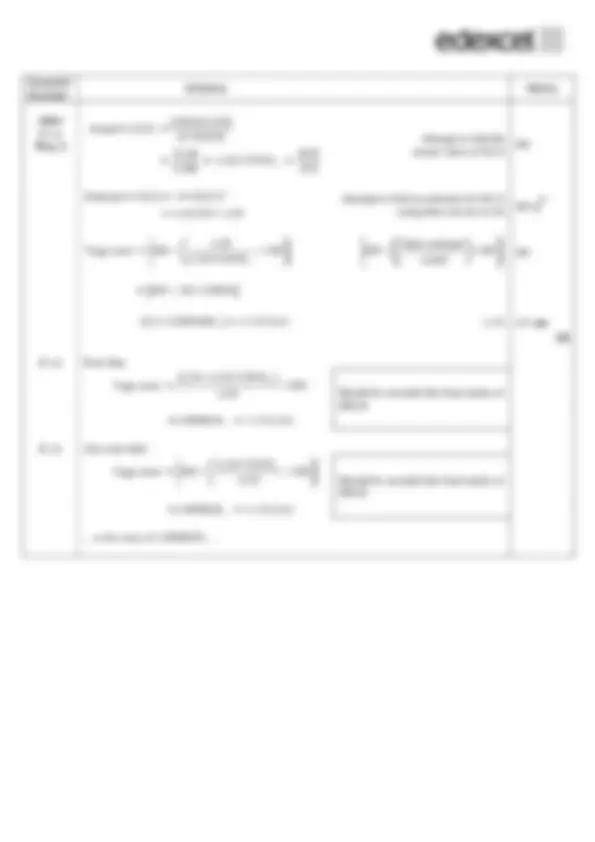
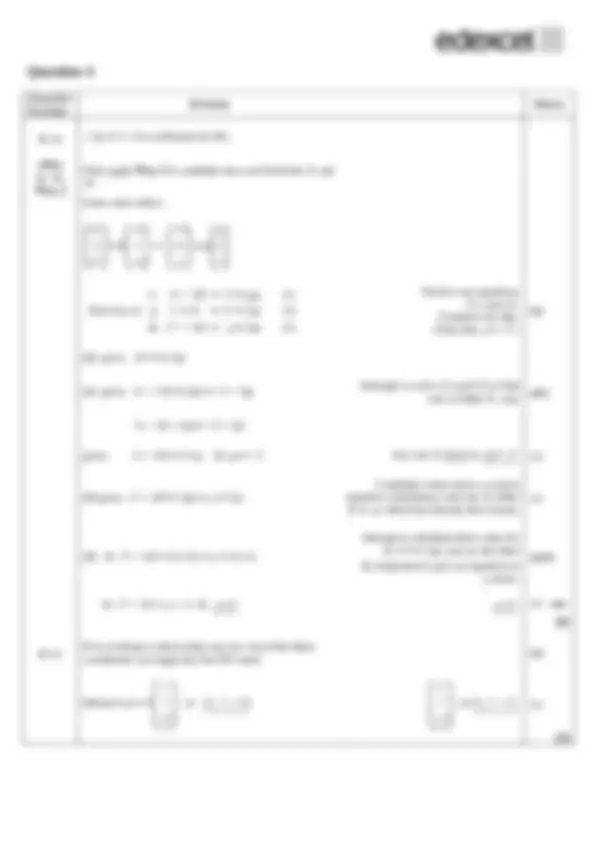
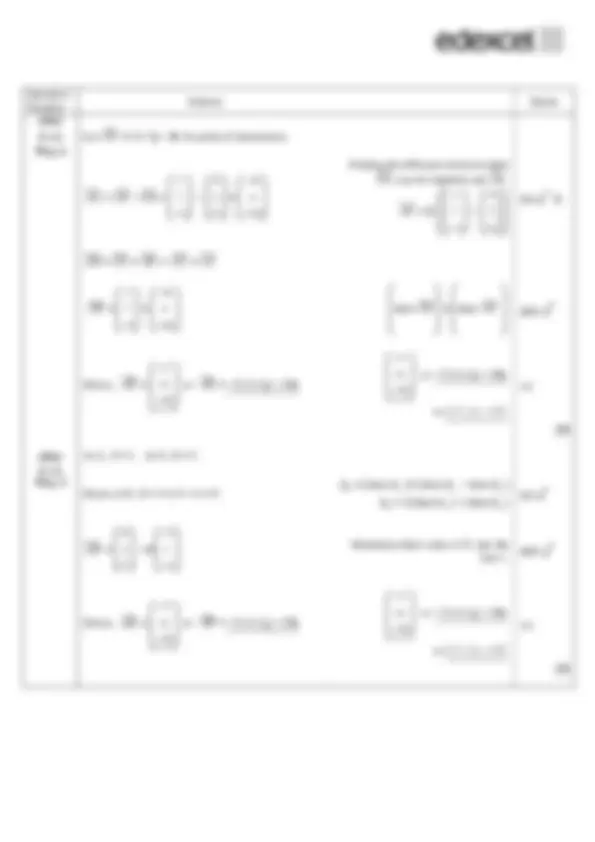
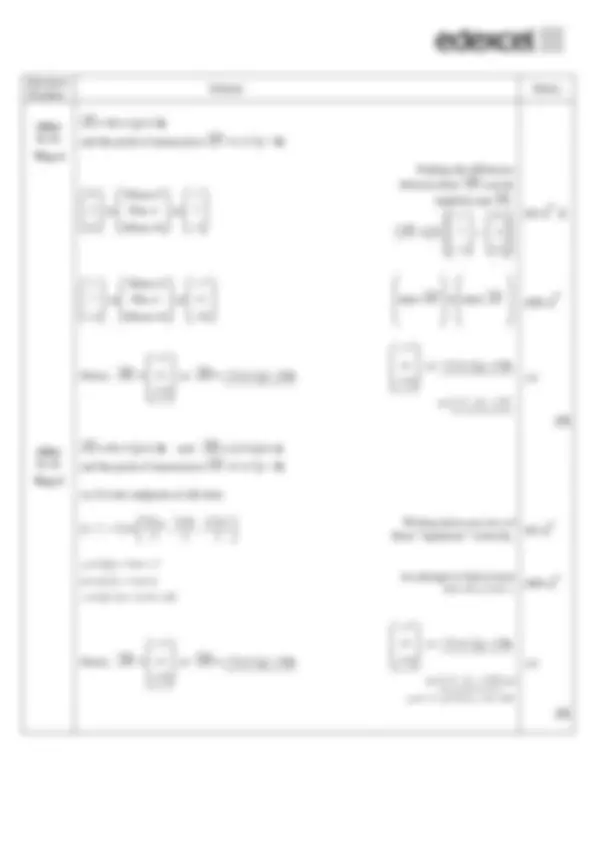
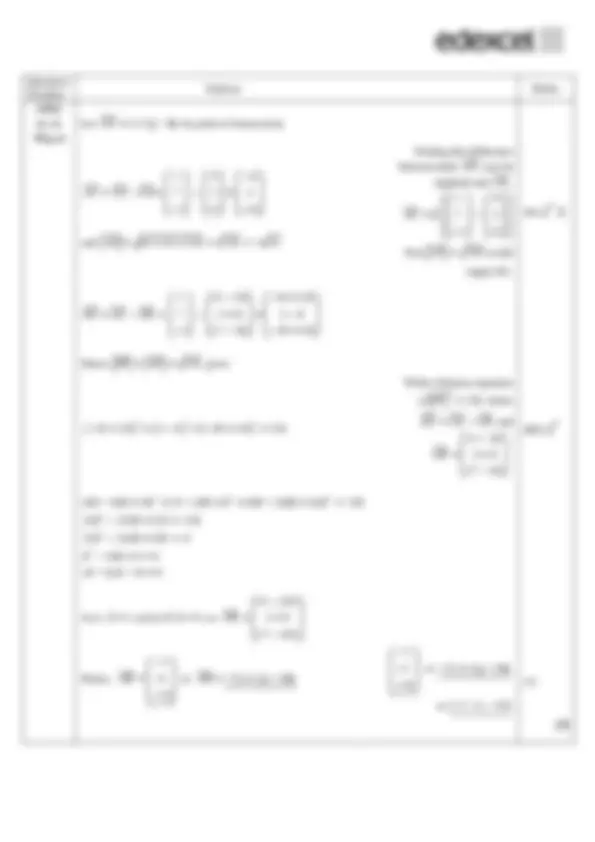
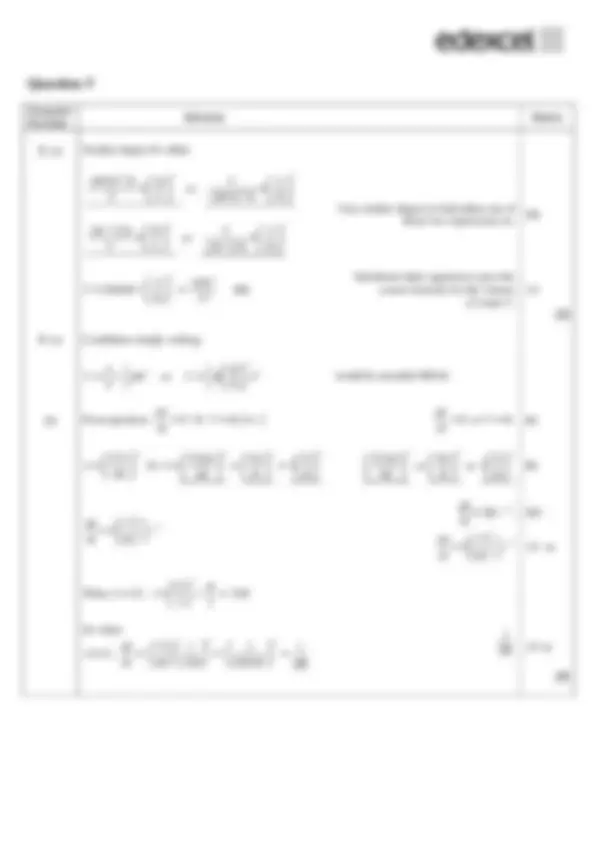
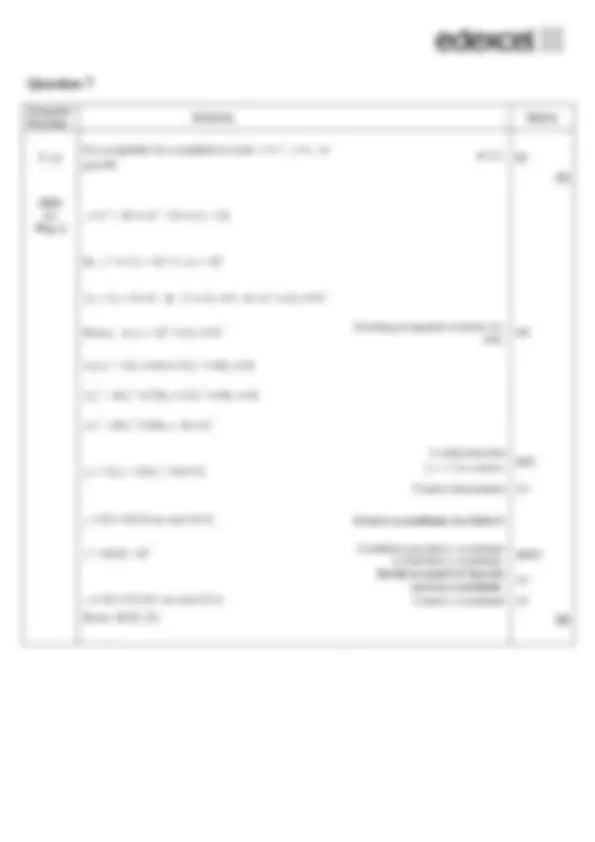
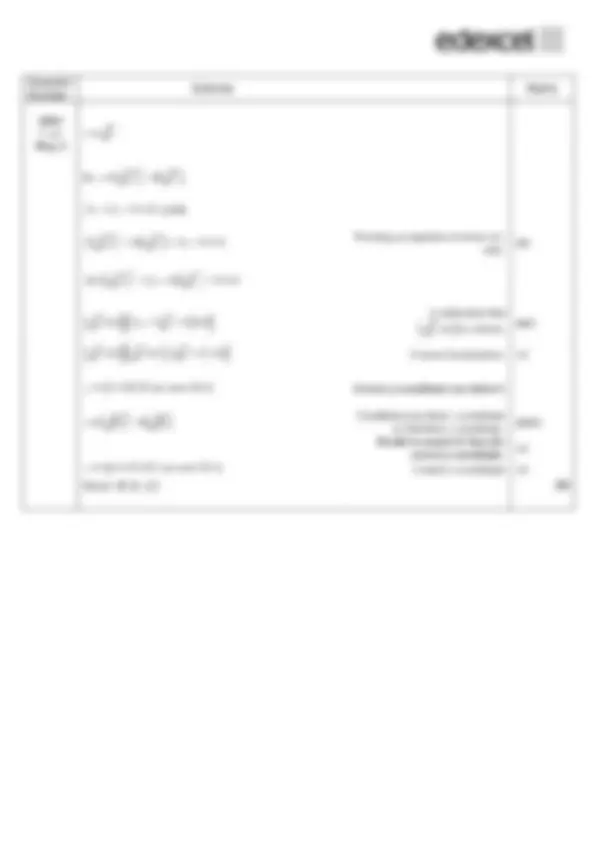


Study with the several resources on Docsity

Earn points by helping other students or get them with a premium plan


Prepare for your exams
Study with the several resources on Docsity

Earn points to download
Earn points by helping other students or get them with a premium plan
Community
Ask the community for help and clear up your study doubts
Discover the best universities in your country according to Docsity users
Free resources
Download our free guides on studying techniques, anxiety management strategies, and thesis advice from Docsity tutors
A mathematical problem that involves integration, substitution, and vector calculus. The problem includes various equations and expressions, and the goal is to find the values of certain variables or expressions. The document also includes some notes and comments from the solver. This document could be useful for students studying advanced mathematics, particularly calculus and vector calculus.
What you will learn
Typology: Study Guides, Projects, Research
1 / 25

This page cannot be seen from the preview
Don't miss anything!


















Edexcel Limited. Registered in England and Wales No. 4496750 Registered Office: One90 High Holborn, London WC1V 7BH
Number
Scheme Marks
2. (a) Area( R ) =^
1 2
2 2
0 0
d 3(1 4 ) d (1 4 )
x x x x
− = +
∫ ∫
Integrating
1 2 3(1 4 ) x
−
1 2 ± k (1 + 4 ) x.
1 2
2
1 (^2 )
⎡ (^) + x ⎤ = ⎢ ⎥
⎢⎣ ⎥⎦ Correct integration.
Ignore limits.
1 2
2 3 2 0
= ⎡^ (1 +4 ) x ⎤ ⎣ ⎦
( ) (^ )
3 3 2 2
Substitutes limits of 2 and 0 into a
changed function and subtracts the
correct way round.
9 3 2 2 2
= − = 3 (units) 3 A
(Answer of 3 with no working scores M0A0M0A0.)
(b) Volume
2 2
0
d (1 4 )
x x
∫ (^) ⎝ + ⎠
Use of
2
∫
Can be implied. Ignore limits and d. x
2
0
d 1 4
x x
∫
± k ln 1 + 4 x M
2 9
4 ln 1^ +^4 x A
( ) ( ) ( )
9 9 4 4
Substitutes limits of 2 and 0
and subtracts the correct way round.
dM
So Volume
9
9
9
18
9 marks
Note the answer must be a one term exact
value. Note, also you can ignore
subsequent working here.
Note that
9 = 4 πln 9 + c (oe.) would be awarded the final A0.
Note that ln1 can be implied as equal to 0.
Number
Scheme Marks
3. (a)
2 2 27 x + 32 x + 16 ≡ A (3 x + 2)(1 − x ) + B (1 − x ) + C (3 x + 2) Forming this identity M
Substitutes either 2 3
x = − or x = 1
into their identity or equates 3
terms or substitutes in values to
write down three simultaneous
equations.
2 x = − 3 , ( ) ( )
64 5 20 5 12 − 3 + 16 = 3 B ⇒ 3 = 3 B ⇒ B = 4
x = 1, 27 + 32 + 16 = 25 C ⇒ 75 = 25 C ⇒ C = 3
Both B = 4 and C = (^3) A
( Note the A1 is dependent on
both method marks in this part.)
Equate x
2 :
x A B C
Compares coefficients or
substitutes in a third x -value or
uses simultaneous equations to
show A = 0.
(b) (^2)
f ( ) (3 2) (1 )
x x x
2 1 4(3 x 2) 3(1 x )
− − = + + −
Moving powers to top on any one
of the two expressions
( )
3 2 1 4 2 1 2 x 3(1 x )
− (^) − = ⎡^ + ⎤+ − ⎣ ⎦
( )
3 2 1 1 1 2 x 3(1 x )
− (^) − = + + −
3 3 2 2 2
⎧ (^) x − − x ⎫ = (^) ⎨ + − + + ⎬
⎩ ⎭
Either
3 2
x ± − or
1 ± ( 1)(− − x )from either first or
second expansions respectively
dM1;
Ignoring 1 and 3, any one
correct (^) {..........} expansion.
x x
Both (^) {..........} correct. (^) A
{ } { }
27 2 2 = 1 − 3 x + 4 x + ... + 3 1 + x + x +...
39 2 = 4 + 0 x ;+ 4 x
39 2 4 + (0 ) ; x (^) 4 x A1; A
Number
Scheme Marks
4. (a) d^ 1 = −^2 i^ +^ j^ −^4 k^ ,^ d^ 2 =^ q i^ +^2 j^ +^2 k
As
1 2
q
q
d d
Apply dot product calculation between
two direction vectors, ie.
( 2− × q ) + (1 × 2) + ( 4− × 2)
q
q q
d d (^) Sets d 1 (^) • d 2 = 0
and solves to find q = − 3
A1 cso
(b) Lines meet where:
q
p
λ μ
First two of
q
p
λ μ
λ μ
λ μ
i
j
k
Need to see equations
(1) and (2).
Condone one slip.
(Note that q = − 3 .)
(1) + 2 (2) gives: 15 = 17 + μ ⇒ μ= − 2
Attempts to solve (1) and (2) to find
one of either λ or μ
dM
Any one of λ = 5 or μ= − (^2) A (2) gives: 2 + λ= 11 − 4 ⇒ λ= 5 Both λ= 5 and μ= − (^2) A
(3) ⇒ 17 − 4(5) = p + 2( 2)−
into their k component to give an
equation in p alone.
ddM
⇒ p = 17 − 20 + 4 ⇒ p = 1 p = 1 A1 cso
(c)
2 5 1 or 11 2 2
r r
Substitutes their value of λ or μ into
the correct line l 1 or l 2.
7 or 1, 7, 3
r
Number
Scheme Marks
(d) Let OX = i + 7 j − 3 k
uuur be point of intersection
uuur uuur uuur
Finding vector AX
uuur by finding the
difference between OX
uuur and OA
uuur
. Can
be ft using candidate’s OX
uuur .
uuur uuur uuur uuur uuur
uuur
3 2 their
uuur
dM
Hence,
uuur or OB = − 7 i + 11 j − 19 k
uuur
or − 7 i + 11 j − 19 k
13 marks
Number
Scheme Marks
6. (a)
2 tan x d x ∫
2 2 2 2 ⎡ (^) NB : sec A = 1 + tan A gives tan A = sec A − 1 ⎤ ⎣ ⎦
The correct underlined identity. M1 oe
2 = sec x −1 d x ∫
Correct integration
with/without + c
(b) (^3)
ln x d x ∫ x
2 2
d 1 d
d^31 d (^2 )
ln
u x x
v x x (^) x
u x
x v
− −^ − −
Use of ‘integration by parts’ formula
in the correct direction.
2 2
ln. d 2 2
x x x x x
∫
Correct expression. A
2 3
ln d 2 2
x x x x
∫
An attempt to multiply through
n
k
x
, n ∈ � , n … 2 by
1 x and an
attempt to ...
… “integrate”(process the result); M
ln 2 2 2
x c x x
correct solution with/without + c A1 oe
[4]
Correct direction means that u =ln x.
Number
Scheme Marks
(c)
3 e d 1 e
x
x
x ∫ +
d d 1 d 1 1 e e , , d d e d 1
x x x
u x x u x u u u
Differentiating to find any one of the
three underlined
2 2
3
e .e ( 1) .e 1 d. d 1 e e
or. d ( 1)
x x x
x x
u x u u
u u u u
∫ ∫
∫
Attempt to substitute for
2 e f ( )
x = u ,
their
d 1
d e
x
x
u
= and 1 e
x u = +
or
3 e f ( )
x = u , their
d 1
d 1
x
u u
and
1 e
x u = +.
2 ( 1) d
u u u
∫
2 ( 1) d
u u u
∫
2 2 1 d
u u u u
∫
u 2 d u u
∫
An attempt to
multiply out their numerator
to give at least three terms
and divide through each term by u (^) dM1*
2
2 ln 2
u = − u + u + c
Correct integration
with/without +c
2 (1 e ) 2(1 e ) ln(1 e ) 2
x x x c
Substitutes 1 e
x u = + back into their
integrated expression with at least
two terms.
dM1*
1 1 2 2 2
e e 2 2e ln(1 e )
x x x x = + + − − + + + c
1 1 2 2 e^2 e^2 2e^ ln(1^ e )
x x x x = + + − − + + + c
1 2 3 2 e^ e^ ln(1^ e ) 2
x x x = − + + − + c
1 2 2 e^ e^ ln(1^ e )
x x x = − + + + k AG
1 2 2 e^ e^ ln(1^ e )
x x x − + + + k
must use a + c and
3 " − 2 "combined. A1 cso
13 marks
ddM1 denotes a method mark which is dependent upon the award of the previous two method marks.
Oe or equivalent.
Question
Number
Scheme Marks
Aliter
1. (a)
Way 2
2 3 y − 3 y = x + 8
Differentiates implicitly to include either
2 d
d
x kx y
±. (Ignore
d
d
x
y
d 2 d 2 3 3 d d
x x y x y y
Correct equation. A
( )
2 d d
y x
y − = x Applies
( )
d d
d 1
d
y x
x
y
= (^) dM
2 d 3
d 2 3
y x
x y
2 3
x
y −
A1 oe
Aliter
1. (a)
Way 3
2 3 y − 3 y = x + 8
gives
3 2 x = y − 3 y − 8
( )
1 2 3 ⇒ x = y − 3 y − 8
2 1 3 3 f (^ y )^^ f (^ y )
− ′ (^). M ( ) ( )
2 d (^1 ) 3 8 2 3 d 3
x y y y y
− = − − −
Correct differentiation. A
( )
2 2 3
d 2 3
d (^3 3 )
x y
y (^) y y
( )
2 2 3 d^3 3
d 2 3
y^ y^ y
x y
Applies
( )
d d
d 1
d x y
y
x
dM
( )
2 3 3 d^3
d 2 3
y^ x
x y
2 d 3
d 2 3
y x
x y
( )
2 3 3 3
x
y −
or
2 3
x
y −
A1 oe
Question
Number
Scheme Marks
Aliter
3. (a)
Way 2
2 2 27 x + 32 x + 16 ≡ A (3 x + 2)(1 − x ) + B (1 − x ) + C (3 x + 2) Forming this identity M
2 terms : 27 3 9 (1)
terms : 32 12 (2)
constants: 16 = 2 4 (3)
x A C
x A B C
equates 3 terms. M
(2) + (3) gives 48 = 3 A + 16 C (4)
(1) + (4) gives 75 = 25 C ⇒ C = 3
(1) gives 27 = − 3 A + 27 ⇒ 0 = − 3 A ⇒ A = 0
(2) gives 32 = − B + 36 ⇒ B = 36 − 32 = 4 Both B = 4 and C = (^3) A
Decide to award B1 for A = (^0) B
3. (a) (^) If the candidate assumes A = 0 and writes the identity 27 x^2^ + 32 x + 16 ≡ B (1 − x ) + C (3 x +2)^2
and goes on to find B = 4 and C = 3 then the candidate is awarded M0M1A0B0.
3. (a) (^) If the candidate has the incorrect identity 27 x^2^ + 32 x + 16 ≡ A (3 x + 2) + B (1 − x ) + C (3 x + 2)^2 and
goes on to find B = 4, C = 3 and A = 0 then the candidate is awarded M0M1A0B1.
3. (a) If the candidate has the incorrect identity 2 2 2 27 x + 32 x + 16 ≡ A (3 x + 2) (1 − x ) + B (1 − x ) + C (3 x + 2) and goes on to find B = 4, C = 3 and
A = 0 then the candidate is awarded M0M1A0B1.
Number
Scheme Marks
Aliter
3. (b)
Way 2
2
f ( ) (3 2) (1 )
x x x
2 1 4(3 x 2) 3(1 x )
− − = + + −
Moving powers to top on any one
of the two expressions
2 1 4(2 3 ) x 3(1 x )
− − = + + −
x x
Either
2 3 (2) ( 2)(2) (3 ) x
− − ± − or
1 ± ( 1)(− − x ) from either first or
second expansions respectively
dM1;
Ignoring 1 and 3, any one
correct (^) {..........} expansion.
x x
Both (^) {..........} correct. (^) A
{ } { }
1 3 27 2 2 = 4 4 − 4 x + 16 x + ... + 3 1 + x + x +...
39 2 = 4 + 0 x ;+ 4 x
39 2 4 + (0 ) ; x (^) 4 x A1; A
Question
Number
Scheme Marks
4. (a) −^2 q +^2 −^8 is sufficient for M1.
Aliter
4. (b)
Way 2
Lines meet where:
q
p
First two of
q
p
i
j
k
Need to see equations
(2) and (2).
Condone one slip.
(Note that q = − 3 .)
Attempts to solve (1) and (2) to find
one of either λ or μ
dM
Candidate writes down a correct
equation containing p and one of either
(3) ⇒ 17 − 4(9 + 2( 2))− = p + 2( 2)−
Attempt to substitute their value for
k component to give an equation in
p alone.
ddM
⇒ 17 − 20 = p − 4 ⇒ p = 1 p = 1 A1^ cso
4. (c)
If no working is shown then any two out of the three
coordinates can imply the first M1 mark.
7 or 1, 7, 3
r
Number
Scheme Marks
Aliter
4. (d) (^) Let OX = i + 7 j − 3 k
uuur be point of intersection
Way 2
uuur uuur uuur
Finding the difference between their
uuur (can be implied) and OA
uuur .
uuur M1^ ±
uuur uuur uuur uuur uuur
uuur their OX their AX
uuur uuur
dM
Hence,
uuur or OB = − 7 i + 11 j − 19 k
uuur
or − 7 i + 11 j − 19 k
4. (d)
Way 3
uuur Substitutes their value of λ into the
line l 1.
dM
Hence,
uuur or OB = − 7 i + 11 j − 19 k
uuur
or − 7 i + 11 j − 19 k